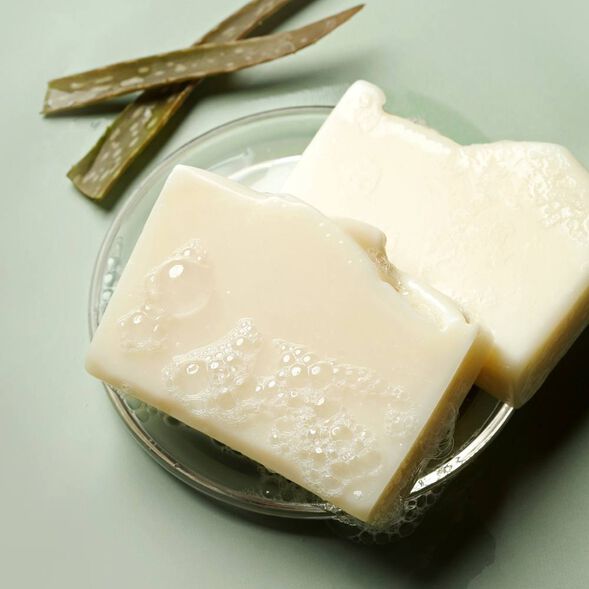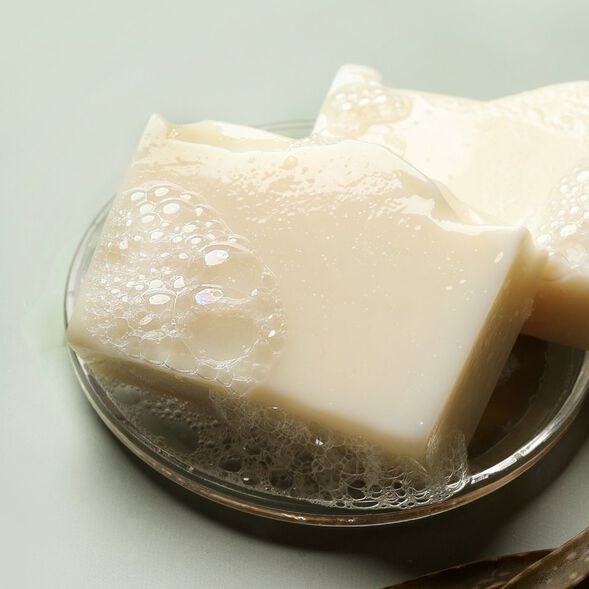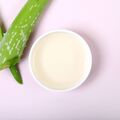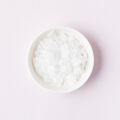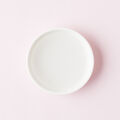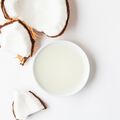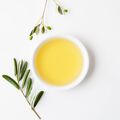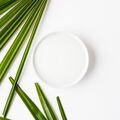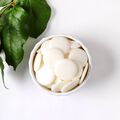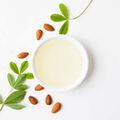
Palm-Free Aloe Soap Project
- Skill Level: Beginner
- Time: 2 hours
- Yield: About 3 pounds of soap
Project Description
An increasing number of consumers are looking to reduce palm oil in their lives. Whether or not you soap with it is a personal choice. If you're new to this, click here to learn more about palm oil alternatives, and click here to find cold process soap making oils.
To compensate for the lack of palm oil, this recipe has a large amount of firm oils like coconut and babassu. We also recommend using sodium lactate and promoting gel phase to ensure a hard bar. We kept this recipe simple without any fragrance or color, but feel free to customize to your preferences.
You will need:
- 10" Silicone Loaf Mold
- 11.6 oz. Coconut Oil (33%)
- 8.8 oz. Olive Oil Pomace (25%)
- 8.8 oz. Babassu Oil (25%)
- 4.2 oz. Sweet Almond Oil (12%)
- 1.8 oz. Cocoa Butter (5%)
- 5.3 oz. Sodium Hydorixide Lye
- 10 oz. Distilled Water (15% water discount)
- 1 oz. Aloe Vera Concentrate
- 2.5 tsp. Sodium Lactate
SAFETY FIRST: Suit up for safe handling practices. That means goggles, gloves, and long sleeves. Make sure kids, pets, other distractions, and tripping hazards are out of the house or don’t have access to your space. Always make soap in a well-ventilated area.
Follow these steps:
1
Slowly and carefully add 5.3 ounces of lye to 10 ounces of distilled water and 1 ounce of aloe vera concentrate. Gently stir until the lye has fully dissolved and the liquid is clear. Set aside to cool, and then add 2.5 teaspoons of sodium lactate to the lye water.
2
Melt and measure 11.6 ounces of coconut oil, 8.8 ounces of olive oil pomace, 8.8 ounces of babassu oil, 4.2 ounces of sweet almond oil, and 1.8 ounces of cocoa butter into a large heat-safe container. Allow the lye water and the oils to cool to 130° F or below (and ideally within 10 degrees of each other). For this recipe, both were around 120° F.
3
Place your stick blender into the bowl. Gently tap it on the bottom several times to release any bubbles that got trapped by the stick blender head. This is called “burping."
4
Once bubbles no longer rise to the surface, gently pour the lye water into the bowl.
5
Turn on the stick blender and pulse several times. You'll immediately see the lye and oils come together and create a creamy yellow color. Alternate between pulsing the stick blender and using it to stir. After about 30 seconds, test for trace.
You will see that when the stick blender is pulled out, the drips or "trailings" of soap don't suspend on the top. This is thin trace. For some recipes, you may want to stop here. Because this one doesn't need color or fragrance, keep pulsing and stirring with the stick blender.
6
You may notice the soap starting to lighten in color. It will also get thicker. Once the soap is thick enough to support the trailings on the surface and the consistency is slightly thinner than pudding, it's at medium trace and perfect for pouring.
7
Pour the soap into the mold. Scrape the sides of the bowl so you get every last bit. Tap the mold on the counter to get rid of any bubbles, and use a spoon to create texture on the top.
8
Spray the top with 99% isopropyl alcohol to help prevent soda ash. If you live in a cold area, promote gel phase by placing the mold on a heating pad set to medium for 1-2 hours. You can also insulate the mold by covering it.
Allow the soap to sit in the mold for 2-3 days. Unmold and cut into bars, and let them cure for 4-6 weeks. Cure the soap in a cool, dry place with plenty of airflow. That allows excess water to evaporate, which makes the bars firmer and last longer in the shower.
Tutorial credits
Photographer: Amanda Kerzman

Palm-Free Aloe Soap Project
- Skill Level: Beginner
- Time: 2 hours
- Yield: About 3 pounds of soap
Project Description
An increasing number of consumers are looking to reduce palm oil in their lives. Whether or not you soap with it is a personal choice. If you're new to this, click here to learn more about palm oil alternatives, and click here to find cold process soap making oils.
To compensate for the lack of palm oil, this recipe has a large amount of firm oils like coconut and babassu. We also recommend using sodium lactate and promoting gel phase to ensure a hard bar. We kept this recipe simple without any fragrance or color, but feel free to customize to your preferences.
You will need:
- 10" Silicone Loaf Mold
- 11.6 oz. Coconut Oil (33%)
- 8.8 oz. Olive Oil Pomace (25%)
- 8.8 oz. Babassu Oil (25%)
- 4.2 oz. Sweet Almond Oil (12%)
- 1.8 oz. Cocoa Butter (5%)
- 5.3 oz. Sodium Hydorixide Lye
- 10 oz. Distilled Water (15% water discount)
- 1 oz. Aloe Vera Concentrate
- 2.5 tsp. Sodium Lactate
SAFETY FIRST: Suit up for safe handling practices. That means goggles, gloves, and long sleeves. Make sure kids, pets, other distractions, and tripping hazards are out of the house or don’t have access to your space. Always make soap in a well-ventilated area.
Follow these steps:
1
Slowly and carefully add 5.3 ounces of lye to 10 ounces of distilled water and 1 ounce of aloe vera concentrate. Gently stir until the lye has fully dissolved and the liquid is clear. Set aside to cool, and then add 2.5 teaspoons of sodium lactate to the lye water.
2
Melt and measure 11.6 ounces of coconut oil, 8.8 ounces of olive oil pomace, 8.8 ounces of babassu oil, 4.2 ounces of sweet almond oil, and 1.8 ounces of cocoa butter into a large heat-safe container. Allow the lye water and the oils to cool to 130° F or below (and ideally within 10 degrees of each other). For this recipe, both were around 120° F.
3
Place your stick blender into the bowl. Gently tap it on the bottom several times to release any bubbles that got trapped by the stick blender head. This is called “burping."
4
Once bubbles no longer rise to the surface, gently pour the lye water into the bowl.
5
Turn on the stick blender and pulse several times. You'll immediately see the lye and oils come together and create a creamy yellow color. Alternate between pulsing the stick blender and using it to stir. After about 30 seconds, test for trace.
You will see that when the stick blender is pulled out, the drips or "trailings" of soap don't suspend on the top. This is thin trace. For some recipes, you may want to stop here. Because this one doesn't need color or fragrance, keep pulsing and stirring with the stick blender.
6
You may notice the soap starting to lighten in color. It will also get thicker. Once the soap is thick enough to support the trailings on the surface and the consistency is slightly thinner than pudding, it's at medium trace and perfect for pouring.
7
Pour the soap into the mold. Scrape the sides of the bowl so you get every last bit. Tap the mold on the counter to get rid of any bubbles, and use a spoon to create texture on the top.
8
Spray the top with 99% isopropyl alcohol to help prevent soda ash. If you live in a cold area, promote gel phase by placing the mold on a heating pad set to medium for 1-2 hours. You can also insulate the mold by covering it.
Allow the soap to sit in the mold for 2-3 days. Unmold and cut into bars, and let them cure for 4-6 weeks. Cure the soap in a cool, dry place with plenty of airflow. That allows excess water to evaporate, which makes the bars firmer and last longer in the shower.
Tutorial credits
Photographer: Amanda Kerzman
You will need:
- 10" Silicone Loaf Mold
- 11.6 oz. Coconut Oil (33%)
- 8.8 oz. Olive Oil Pomace (25%)
- 8.8 oz. Babassu Oil (25%)
- 4.2 oz. Sweet Almond Oil (12%)
- 1.8 oz. Cocoa Butter (5%)
- 5.3 oz. Sodium Hydorixide Lye
- 10 oz. Distilled Water (15% water discount)
- 1 oz. Aloe Vera Concentrate
- 2.5 tsp. Sodium Lactate
SAFETY FIRST: Suit up for safe handling practices. That means goggles, gloves, and long sleeves. Make sure kids, pets, other distractions, and tripping hazards are out of the house or don’t have access to your space. Always make soap in a well-ventilated area.
Follow these steps:
1
Slowly and carefully add 5.3 ounces of lye to 10 ounces of distilled water and 1 ounce of aloe vera concentrate. Gently stir until the lye has fully dissolved and the liquid is clear. Set aside to cool, and then add 2.5 teaspoons of sodium lactate to the lye water.
2
Melt and measure 11.6 ounces of coconut oil, 8.8 ounces of olive oil pomace, 8.8 ounces of babassu oil, 4.2 ounces of sweet almond oil, and 1.8 ounces of cocoa butter into a large heat-safe container. Allow the lye water and the oils to cool to 130° F or below (and ideally within 10 degrees of each other). For this recipe, both were around 120° F.
3
Place your stick blender into the bowl. Gently tap it on the bottom several times to release any bubbles that got trapped by the stick blender head. This is called “burping."
4
Once bubbles no longer rise to the surface, gently pour the lye water into the bowl.
5
Turn on the stick blender and pulse several times. You'll immediately see the lye and oils come together and create a creamy yellow color. Alternate between pulsing the stick blender and using it to stir. After about 30 seconds, test for trace.
You will see that when the stick blender is pulled out, the drips or "trailings" of soap don't suspend on the top. This is thin trace. For some recipes, you may want to stop here. Because this one doesn't need color or fragrance, keep pulsing and stirring with the stick blender.
6
You may notice the soap starting to lighten in color. It will also get thicker. Once the soap is thick enough to support the trailings on the surface and the consistency is slightly thinner than pudding, it's at medium trace and perfect for pouring.
7
Pour the soap into the mold. Scrape the sides of the bowl so you get every last bit. Tap the mold on the counter to get rid of any bubbles, and use a spoon to create texture on the top.
8
Spray the top with 99% isopropyl alcohol to help prevent soda ash. If you live in a cold area, promote gel phase by placing the mold on a heating pad set to medium for 1-2 hours. You can also insulate the mold by covering it.
Allow the soap to sit in the mold for 2-3 days. Unmold and cut into bars, and let them cure for 4-6 weeks. Cure the soap in a cool, dry place with plenty of airflow. That allows excess water to evaporate, which makes the bars firmer and last longer in the shower.
Tutorial credits
Photographer: Amanda Kerzman


